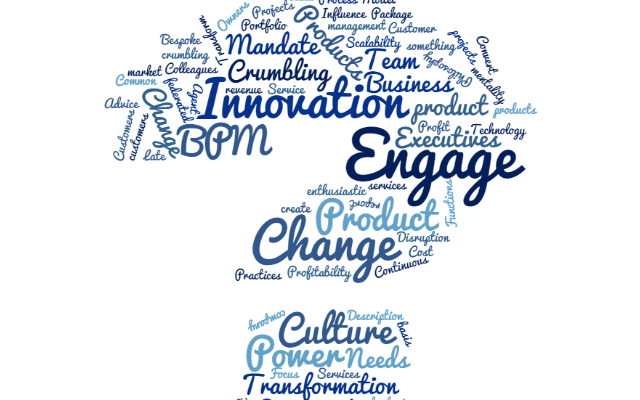Scott wants to transform Systems Integrators International. He’s a convert. He’s seen the light and can’t understand why his colleagues are not quite as enthusiastic (as he is). The idea of re-orienting the organization around a coherent set of services and products supported by well-honed business processes and practices seems … well, right! With a product/repeatable service focus, SII could then develop a broad range of products and manage them as a portfolio, improving them over time, while making best use of the resources it has available. It just makes sense (to him).
Historically, SII had grown by focusing on big defense and government customers—doing just about everything they might need—and putting it all together in a bespoke package. Problem is that this business model is increasingly hard to scale and doesn’t produce great margins. SII executives became attracted by the margins and profitability of products. So they bought a couple of small technology vendors and put a few product managers—people like Scott—in strategic positions within the organization. They felt that this would create the basis for a successful transformation, something the 100 year old company desperately needs.
Scott can see how a product management philosophy and culture is needed, but he keeps banging his head against the slowly crumbling brick wall of bespoke system integration. He’s knows that the current halfhearted approach to products/services, which is still rooted in the “we can build it” engineering mentality, will lead to products that are:
- Late to market—by the time they are ready, a competitor has already stolen the future.
- Don’t sell as much—sales predictions (such as they are) never materialize.
- Cost too much to build—cost overruns are common place in a system integration business, but they can kill a product oriented business.
As a newly anointed VP of Product, Scott has no power to mandate change in this federated organization. He has to work through influence. He recently wrote and circulated a short report on the joys of product management for the Board of SSI and its senior leadership team. Having just read the last batch of the responses, he’s not sure if that was a good idea. These were some of the responses from the executive team:
- CFO: There is no budget for this work – it’s bound to upset current projects and customers, affecting revenue and profitability.
- HR Director: We can’t appoint Product Owners as its confusing to our new Process Owners. There is no such Job Description anyway. If you are determined to do this, it will need careful introduction if we are to avoid disrupting our current contract negotiations with staff. We don’t have the resources to make this work.
- VP Shared Services: We already incorporate many common functions into customer projects; what’s to become of them? Where will this new product organization report?
- VP of Sales and Marketing: SII product design and development is not about a set of processes, it’s about creative people thinking and generating ideas. That’s what I call innovation. Besides, our customers want us to focus on better project management practices.
- COO: This is not the first time we have started down this path. While commendable in spirit, in the end, these sorts of efforts usually come to nothing.
- CIO: We already understand this stuff. We use BPM technology in some of our internal services and projects. We’ve been researching it for the last five years.
- CEO: Thanks Scott. This is really interesting stuff. But what does it mean when you say the culture needs to change?
Scott’s wondering what his next step should be. He really wants to transform the organization rather than just re-arranging the “deck chairs”. However, maybe it’s not the best time to push products, services and processes at SSI. It seems that nobody is really interested in a holistic enterprise-wide view. As an entrepreneur, he’s learnt not to give up so easily. He wants to have another try:
- But what’s the best way to get the message across?
- How can he prove the benefits and generate some energy?
- How can he mobilize his colleagues?
- What sort of help should he go looking for?
This somewhat fictitious example represents an amalgam of the challenges faced in recent engagements. It would be really interesting to see what advice fellow members of this community would provide to aspiring transformation change agents.
I will post my advice in a week or so – pulling together my own thoughts and those proffered by others.
Article by channel:
Everything you need to know about Digital Transformation
The best articles, news and events direct to your inbox
Read more articles tagged: Change & Transformation, Culture, Featured






